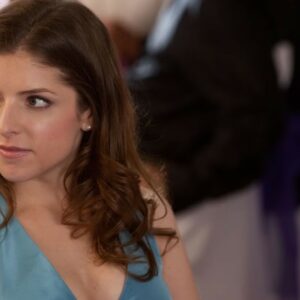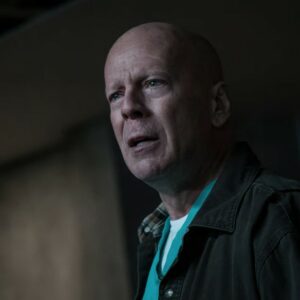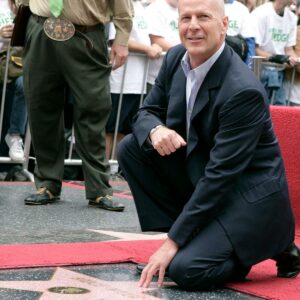The 1999 psychological thriller The Sixth Sense, directed by M. Night Shyamalan, quickly became a cultural phenomenon, celebrated for its masterful storytelling, spine-tingling suspense, and iconic twist ending. It’s a film that resonated not only because of its narrative but also due to its nuanced character portrayals. At the center of this haunting story is Dr. Malcolm Crowe, a dedicated child psychologist portrayed by Bruce Willis. Willis’s restrained, introspective performance brought a profound depth to the character, and a significant part of that depth was conveyed through his style—subtle choices in clothing, demeanor, and physical presentation that communicated the character’s internal struggles. Willis’s portrayal of Dr. Crowe, through both performance and wardrobe, became an essential element of the film’s atmospheric storytelling.
The Role of Style in Character Development
In cinema, wardrobe and physical appearance are powerful tools in character development. An outfit, hairstyle, or even the choice of accessories can speak volumes about a character’s personality, history, and internal state. In The Sixth Sense, Dr. Crowe’s style is a carefully crafted extension of his personality: quiet, introspective, and deeply melancholic. His reserved appearance aligns with his character’s introverted nature, allowing the audience to glean his emotional and psychological burdens without overt exposition. Unlike flamboyant or overtly fashionable choices seen in many cinematic characters, Dr. Crowe’s subdued style is critical in establishing him as a believable therapist, someone who is introspective and perhaps even closed off.
Bruce Willis and the costume design team approached Dr. Crowe’s style with a minimalist philosophy, one that mirrored his thoughtful nature. By favoring muted tones and understated attire, they highlighted Crowe’s introspective character and allowed the audience to sense his burdens through his appearance. This subtle approach to styling went hand-in-hand with Willis’s performance, creating a character who is as much felt as he is seen—a man wrestling with inner demons that reflect in his outer world.
Minimalistic and Muted Color Palette
One of the most noticeable aspects of Dr. Crowe’s style is his wardrobe’s subdued, monochromatic palette. Throughout the film, Crowe is clad in tones of gray, brown, and black—colors that blend into the background yet have a weight and seriousness that fits the film’s themes. These neutral tones not only reflect the somber mood of the story but also mirror Crowe’s internal state. He is a man grappling with unresolved trauma, attempting to find solace and understanding in his work while confronting the limitations of his own life. The muted colors convey a sense of melancholy and isolation, serving as a visual metaphor for his psychological distance from the world around him.
This choice of color palette also allows the character to recede from the vibrancy of life, blending almost seamlessly with the shadows and dimly lit spaces where much of the film’s tension unfolds. His clothing acts as an extension of his emotional state—a restrained and somber palette for a man grappling with disillusionment and detachment. The decision to dress Crowe in subdued colors helps viewers connect with his psychological depth, presenting a man who is physically present yet emotionally distant, a fitting reflection of his existential struggles.
Professional Yet Unassuming Attire
Crowe’s attire reflects his role as a child psychologist, but without the ostentation often seen in other professional portrayals. He wears clothing that is functional, understated, and respectful of his profession—yet without unnecessary embellishments. His look consists of simple, classic pieces, such as button-down shirts, blazers, and wool sweaters, all of which speak to a man who values his work and respects his patients without needing to assert dominance or control. This choice of wardrobe reinforces his humility and devotion, showing that he is not in his profession for status but because he genuinely cares about helping others.
The classic, subdued nature of his clothing underscores his reliability and calm demeanor. He is not a therapist who seeks to stand out but one who blends in, prioritizing the needs of his patients over his own ego. By opting for attire that is simple yet refined, Dr. Crowe embodies a sense of professionalism and dedication that builds trust with both his young patient and the audience. His reserved style is an extension of his humility, suggesting a man who is more focused on healing others than drawing attention to himself.
Subtle Physical Details and Aging
Beyond clothing, The Sixth Sense uses subtle physical details to deepen Dr. Crowe’s character. Bruce Willis’s portrayal includes slight signs of aging—a bit of stubble, a touch of unkempt hair—indicating a man who is weary, worn down by the weight of his life’s work and personal struggles. This slightly disheveled appearance subtly communicates that Crowe is not simply a professional; he is a human being dealing with the trials and tribulations of life, which, in his case, includes the emotional toll of failed relationships and lost connections.
These physical details are carefully crafted to reflect his internal state, contributing to the audience’s understanding of his psychological burdens. Crowe’s weary appearance tells us that he carries the emotional weight of his work with him, that he is someone who cannot simply leave his job at the office. His slightly aged, tired look speaks to a life filled with challenges, regrets, and disappointments, making his journey with young Cole all the more poignant. The subtle aging and weariness create a visual language that speaks to Crowe’s character arc, a man on the brink of self-discovery and, ultimately, acceptance.
Evolution of Style Throughout the Film
As Dr. Crowe’s relationship with Cole deepens, there are subtle shifts in his style that reflect his internal transformation. In the beginning, his clothing and demeanor are reserved, conveying a sense of distance and introspection. However, as he starts to open up and confront his own past, there are gradual changes in his appearance. These small shifts—a loosened collar, a more relaxed fit—symbolize his progression from denial to acceptance, a journey that culminates in his realization of the truth about his existence.
Willis’s portrayal and these stylistic choices allow the audience to witness Crowe’s emotional evolution. His journey with Cole leads him to confront his own limitations and regrets, and his changing style subtly mirrors this internal shift. By the end of the film, Crowe’s style feels more relaxed and at ease, as if he has finally found some measure of peace. This progression is subtle yet powerful, illustrating the way style can serve as a storytelling tool that reflects a character’s psychological journey.
Conclusion
Bruce Willis’s portrayal of Dr. Malcolm Crowe in The Sixth Sense is a testament to the power of style in storytelling. His minimalist wardrobe, muted color palette, and subtle physical details all contribute to a nuanced character whose depth is felt through his appearance as much as his words. The simplicity of Crowe’s style highlights his introspective nature, while the restrained, professional attire speaks to his humility and dedication as a psychologist. As the film progresses, the slight shifts in his appearance mirror his journey from denial to acceptance, allowing the audience to experience his transformation on both a psychological and visual level.
In psychological thrillers, where the narrative often relies on atmosphere and emotional tension, style becomes a crucial element in creating immersive characters. Dr. Crowe’s understated appearance in The Sixth Sense is a perfect example of how clothing, color, and physical details can convey complexity, making him a character whose inner turmoil is as haunting as the film’s storyline. Bruce Willis’s subtle style choices not only defined Dr. Crowe’s character but also elevated the storytelling, proving that sometimes, it is the quietest details that leave the most lasting impression.





